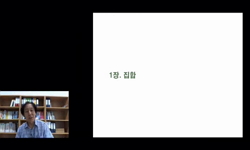예술작품과 미적 가정은 예술작품을 감상하고, 해석하고, 비평하는 데 있어서 상호밀접한 관련을 가진다. 예술작품은 미적 가정들을 통하여 논의되어지고, 미적 가정은 예술작품을 통하여 ...
http://chineseinput.net/에서 pinyin(병음)방식으로 중국어를 변환할 수 있습니다.
변환된 중국어를 복사하여 사용하시면 됩니다.
- 中文 을 입력하시려면 zhongwen을 입력하시고 space를누르시면됩니다.
- 北京 을 입력하시려면 beijing을 입력하시고 space를 누르시면 됩니다.
https://www.riss.kr/link?id=A82474197
- 저자
- 발행기관
- 학술지명
- 권호사항
-
발행연도
2010
-
작성언어
-
- 주제어
-
KDC
607
-
등재정보
KCI등재
-
자료형태
학술저널
-
수록면
261-286(26쪽)
- 제공처
- 소장기관
-
0
상세조회 -
0
다운로드
부가정보
국문 초록 (Abstract)
예술작품과 미적 가정은 예술작품을 감상하고, 해석하고, 비평하는 데 있어서 상호밀접한 관련을 가진다. 예술작품은 미적 가정들을 통하여 논의되어지고, 미적 가정은 예술작품을 통하여 새로운 가정들을 수립하여 나간다. 이러한 관계 속에서 미적 가정과 예술 작품이 하나의 명제로서 역할을 한다고 가정할 때, 각각의 미적 가정들과 예술작품은 명제로서 진리를 내포하는 것으로 생각되어질 수 있다. 이 때 미적 가정과 예술작품이 드러내는 진리는 열려진 개념으로서 이해되어지며. 미학 교육에서의 반성적 사고와 토론을 이끌어갈 수 있는 공간을 형성한다. 본 논문은 미적 가정과 예술작품의 명제적 성질을 바탕으로 가능한 변증법적 병렬 놓기 통하여 만들어지는 “제 3의 공간 (the Third Space)”을 통한 가능한 미학교육을 모색하는 데 그 목적을 두었다. 이를 위하여 본 연구는 먼저 명제로서 미적 가정과 명제로서의 예술작품의 각각의 특징을 밝히고, 그 양자 간의 차이점과 공통점을 비교한 후, 이러한 성질을 바탕으로 하는 변증법적 병렬 놓기를 통하여 형성되어지는 제 3의 공간의 성격을 밝혔다. 본 연구는 이를 통하여 가능한 미학교육을 제시하고 나아가 미학 교육의 중요성과 의의도 아울러 강조하고자 하였다. 먼저, 명제로서 미적 가정을 생각해 볼 때, 미적 가정들은 하나의 고정된 사실을 알려 준다기보다는, 우리의 의견들이 내어놓고 발전시키고, 세계에 대해서 논의를 이끌어갈 수 있도록 안내하는 지도와 같은 역할을 한다. 그렇게 함으로써 미적 가정은 말로 표현할 수 없는 세계에 대해서 우리가 자칫 간과할 수도 있는 통찰을 제공해 준다. 한편, 명제로서의 예술작품의 경우, 예술작품은 과거, 현재와의 끊임없는 대화를 통한 역사성을 가지는 동시에 그러한 역사성을 뛰어넘을 수 있는 자율성을 가진다. 예술작품 속에 창조되어진 이미지들은 비물질적이고 비역사적이다. 예술작품은 명제로서 무엇인가를 말하고 우리에게 말을 걸지만, 그것은 은폐, 혹은 부재 혹은 드러남으로 존재한다. 이러한 특징을 바탕으로 볼 때, 명제로서 예술작품이 세계에서 대해서 은유, 상징, 환유 등을 통하여 말하여질 수 있는 것이라고 한다면, 미적 가정은 말하여진 것에 대하여 직접적으로 말한다는 점에서 차이점을 가진다. 하지만, 양자 모두, 절대적 보편적 진리를 말하거나 내포한다기보다는 열려진 개념으로서 다양한 입장들과 시각들을 내포하는 동시에 그러한 것들이 논의되어질 수 있는 공간을 형성한다는 데 공통점을 가진다. 이러한 공간은 제 3의 공간으로서 일상생활 속에서 당연하게 여겨졌거나 친숙하게 보였던 것을 낯설게 보게 함으로써 우리들의 고정되어진 시각과 사고를 일깨우고 간과했던 사실들을 의식하고 드러나게 해 준다. 미학교육을 정의함에 있어서, 미학교육은 세계를 보는 방법에 대한 교육이며 끊임없이 새로운 눈으로 세상을 보는 교육이라고 할 때 미적 가정과 예술작품의 변증법적 관계에 의해서 창출되는 제 3의 공간은 세계를 반성하고 비판적으로 볼 수 있는 공간을 제공함으로써 미학교육에서 중요한 역할을 한다. 또한 미학교육은 이러한 공간을 통하여 우리로 하여금 의미를 끊임없이 만들어가는 삶의 주체로서 역할을 할 수 있게 한다. 나아가 이러한 공간은 다양한 해석이 공존하는 포스트모던에서의 현대 작품을 통한 미학교육에서도 중요한 역할을 할 수 있으리라고 본다.
다국어 초록 (Multilingual Abstract)
Aesthetic assumptions and artwork are closely related to one another in that we appreciate, interpret, and criticize artworksin art education practice. Moreover, artwork is discussed in terms of aesthetic assumptions while aesthetic assumptions are re...
Aesthetic assumptions and artwork are closely related to one another in that we appreciate, interpret, and criticize artworksin art education practice. Moreover, artwork is discussed in terms of aesthetic assumptions while aesthetic assumptions are recreated and established through artwork. In such a relationship between aesthetic assumptions and artworks, each component is supposed to play a proposition, meaning that each of them as a proposition can be considered as providing the truth. Here, the term proposition refers to the content included in a declarative sentence or the pattern emerging from symbols that comprise a meaningful declarative sentence. Consequently, when we think of aesthetic assumptions and artworks as propositions, the truth that
aesthetic assumptions and artworks reveal is regarded as an open-ended concept that establishes a space whereby we can open our opinions, think reflectively, and discuss ideas with one another. Based on this notion of the characteristics of aesthetic assumtions and artworks as propositions, this study examines the similarities and
differences between aesthetic assumptions and artwork as propositns. This study aims to explore the similarities and differences in order investigate the meaning of “the Third Space,” which is made by creating the dialectical juxtaposition between aesthetic assumptions and artworks. Through this space, aesthetic education enables students to see the familiar world from new perspectives, thereby breaking through what they have previously taken for granted and living in the world as a subject, making meaning continuously without being anchored to routine.
목차 (Table of Contents)
- I . Introduction
- II . Characteristics of Aesthetic Assumptions and Artworks as Propositions
- III . Dialectical Juxtapositions and the Third Space in Aesthetic Education
- IV . Conclusion
- I . Introduction
- II . Characteristics of Aesthetic Assumptions and Artworks as Propositions
- III . Dialectical Juxtapositions and the Third Space in Aesthetic Education
- IV . Conclusion
동일학술지(권/호) 다른 논문
-
2008 개정 특수학교 기본교육과정 미술과에 나타난 활동분석 및 수업운영방안
- 한국미술교육학회
- 이경면(Kyung Myun Lee)
- 2010
- KCI등재
-
초등미술교육에서 동양신화의 교육적 의미와 가능성에 관한 고찰
- 한국미술교육학회
- 김귀옥(Kim, Kwi-O)
- 2010
- KCI등재
-
- 한국미술교육학회
- 이경아(Lee, Kyung-A)
- 2010
- KCI등재
-
중국 호북미술학원 미술기초조형교육의 과제와 방향에 대한 연구
- 한국미술교육학회
- 도학회(Do, hakhoe)
- 2010
- KCI등재





 스콜라
스콜라







